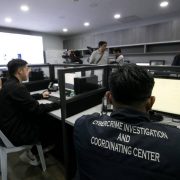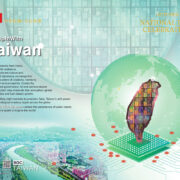PH-China: Troubled present, hopeful future

If the past were any reference, the current rift between the Philippines and China is an aberration. The two countries mark the golden anniversary of official relations, but their trade and people-to-people linkages go back centuries.
The earliest recorded barter between Chinese and Filipino natives dates back to the 9th century. For 250 years (1565-1815), Manila served as a global entrepot, facilitating trade between China and Europe via galleons built by Filipino craftsmen. Hence, the strong case for Manila’s claim as home to the oldest Chinatown. Intermarriages during the Spanish colonial period gave rise to a mestizo class, from which many heroes were born to, including Dr. Jose Rizal and Andres Bonifacio. During World War II, ethnic Chinese—through the Wha-Chi or 48th Squadron—joined the guerilla resistance.
The Cold War put the Philippines and China in opposite camps. But then the late president Ferdinand Marcos Sr. breached that ideological divide and granted citizenship to the ethnic Chinese in the country through naturalization, paving the way for their integration into Philippine polity. With their legal status secured, some of these Chinese entrepreneurs would later become taipans and philanthropists, giving back to their new homeland.
Amid the current turbulence in bilateral relations, there are attempts to revive the ideological rhetoric to frame the gap between the two countries. But ideology has never been an issue since Manila established ties with Peking in 1975. China is still governed by the same political party, with whose leaders Marcos Sr. shook hands with, although the ruling party has also transformed to meet the times.
The normalization of ties occurred as China embarked on a game-changing market reform, which led to the country’s emergence as the greatest economic miracle and the world’s second-largest economy. Since 2016, China has become the Philippines’ largest trade partner, major investor, and infrastructure builder. Seeing China from an ideological lens represents a bygone era that should be discarded.
Understandably, defense and military officials may be wired to view China from a certain angle. But should it dominate the public narrative and direct policy? Can we have economic managers who can passionately articulate the gains from Chinese trade, tourism, investment, and infrastructure to create a more comprehensive appreciation of the ties?
The cost of toxic relations and fixation with the intractable sea spat are palpable. From a historic high of 1.7 million in 2019, Chinese tourist arrivals dropped to just 300,000 last year. Obsessive news coverage of the dispute, stringent visa requirements, and safety concerns dissuaded Chinese travelers.
But Chinese investors came despite political risks even before the country made significant changes to its foreign investment regime. National Grid Corporation of the Philippines, where China’s State Grid has a 40 percent stake, completed the Luzon-Visayas-Mindanao single transmission network last year. China Telecoms made a 40 percent share in the country’s third telco player to break the duopoly. The China-backed Kaliwa Dam, which will enhance Metro Manila’s water security, is expected to be turned over by 2027.
Chinese contractor EnergyChina was tapped to build what is touted as the world’s largest solar farm to rise in Central Luzon. Chinese capital can address perennial investor complaints about the cost and supply of power and basic utilities, thus improving the country’s attractiveness to domestic and foreign investment. Manila should therefore avoid overly securitizing Chinese infrastructure deals.
Finally, the Philippines is losing out from evolving regional production and supply chains. Chinese overcapacity is moving into Southeast Asia to produce and sell in the region and beyond. This is upgrading the manufacturing muscle of its Asean neighbors. It is turning Indonesia from a raw nickel ore exporter to a processor, fueling the country’s ambitions to produce electric batteries and eventually, electric cars.
From steel and solar panels, Chinese firms have moved to produce electric vehicles (EVs) and parts in the region. BYD already has an operational EV factory in Thailand, an electronics factory in Vietnam, and soon an EV factory in Indonesia. Another Chinese brand, Geely, invested in Malaysia’s carmaker Proton. In the Philippines, modernizing public utility vehicles and building an EV charging network are areas where Chinese companies can come in.
In sum, the past offers lessons that the present should reflect on to shape a better future. In 1975, Marcos Sr. seized the moment. Fifty years forward, his son can do the same.
Lucio Blanco Pitlo III is the President of Philippine Association for Chinese Studies

















